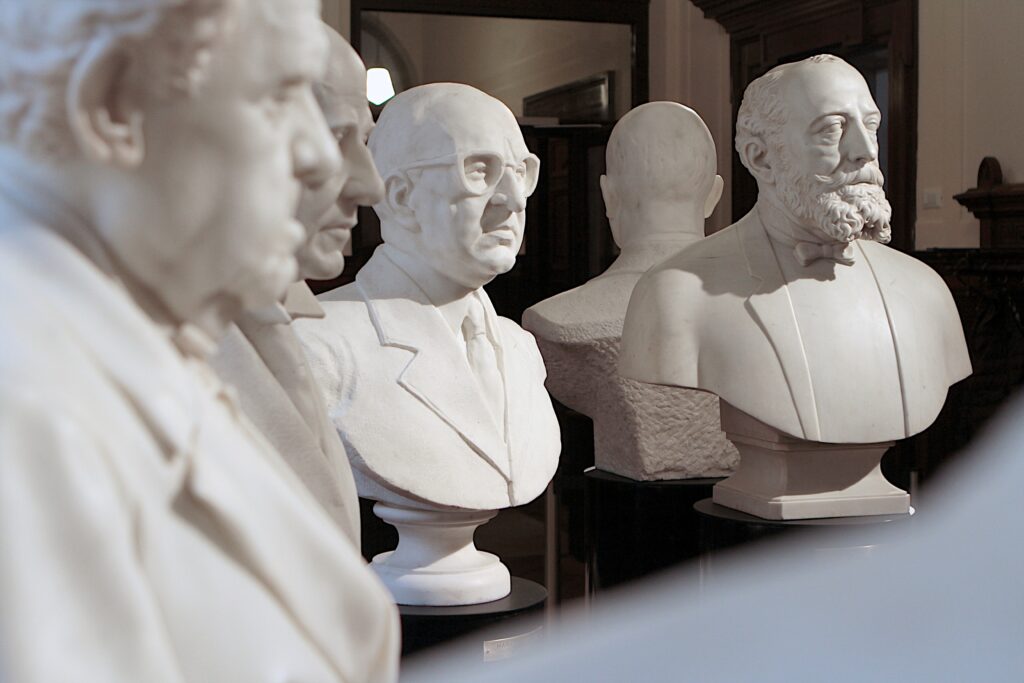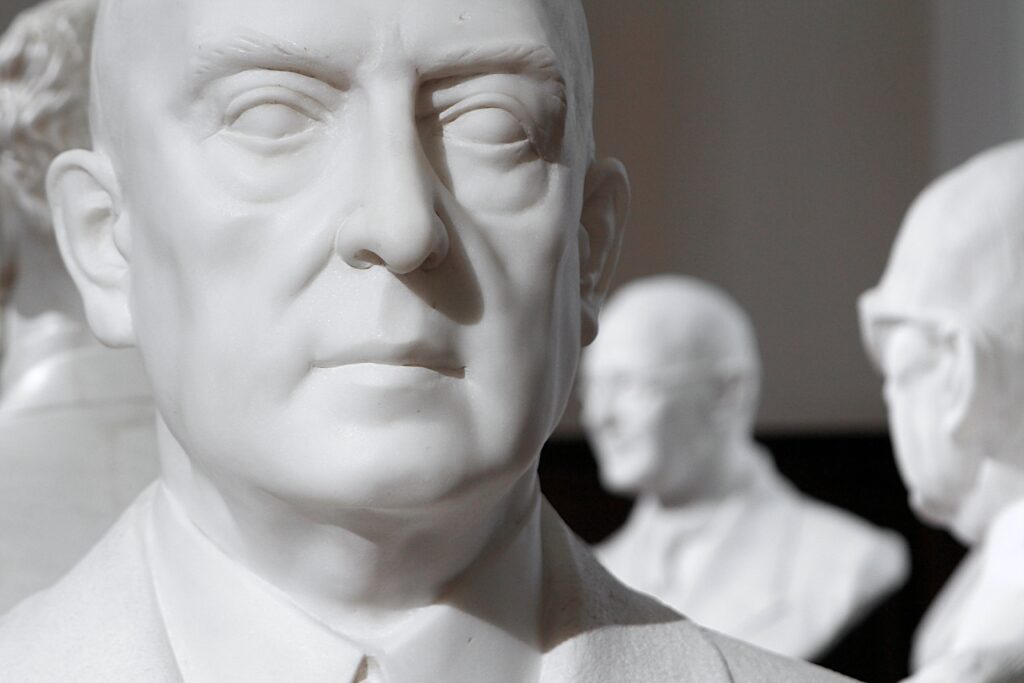New Database Available Online: The Chairmen of Generali in Marble and Bronze
09 February 2024
Generali’s heritage website has been expanded with a new database dedicated to 11 important sculptures, commissioned by the company to honour the memory and the work of some of its most prominent figures: the collection of marble and bronze busts of the chairmen.
The tradition started in 1878 to mark Secretary General Masino Levi’s 40th anniversary at the Company. As a sign of recognition of the esteem in which he was held by the board, and first and foremost as an example for the employees, “to affirm his place among those who serve our company in exemplary and tireless fashion, and are able to reach its highest ranks, and enjoy the very highest appreciation until the very end […].”
Of particular interest is an anecdote shared by Massimo De Grassi in an essay on the Triestine artist behind the bust, Francesco Pezzicar (the name appears on the artwork itself). Citing an article on the sculpture published in Trieste’s Il Cittadino daily newspaper on June 6, 1879, the sculptor was said to have seen Masino Levi a few years earlier, intently reading a newspaper at the table of a café. Pezzicar mentioned to his friends the “distinguished and intelligent countenance of that gentleman” and expressed “a desire to reproduce in marble and ingrain with my chisel the energy that animates him, the intelligence that emanates from him.”
Five years after the passing of Chairman Marco Besso, in 1925, Generali decided to honour him with a commemorative bust, “in recognition of his renowned qualities”. The commission was offered to the Genovese sculptor Gigi Supino, already a recognised name on the national level and the artist behind previous commissions for the Company, such as the medal for the 100th anniversary and the monument to the fallen of the First World War, still today on display in the atrium of Palazzo Geiringer in Trieste, Generali’s first historical headquarters.
The third commission, that of the bust of Edgardo Morpurgo, was to be included in the event to mark the Company’s 125th anniversary in a “familial” yet heartfelt ceremony that sought to “honour the past”. The bust carries the signature of its creator, Triestine artist Adolare Plisnier, as did other busts entrusted to him during the 1950s, those of Giuseppe Volpi di Misurata, Antonio Cosulich, Mario Abbiate, Mario Tripcovich and Camillo Giussani.
The Muggia-born sculptor Ugo Carà (who sculpted under the name Ugo Carabaich, itself later Italianised to Carabei), is the first of the series of busts in bronze, the last ones before the transition to photography: the bust of Gino Baroncini, commissioned in the 1970s, bears his signature.
The bronze busts of Cesara Merzagora and Enrico Randone, both commissioned in 1991, carry the signature of Sicilian artist Innocenzo Vigoroso.
Historically, these busts were on display in the meeting room in the piano nobile of Palazzo Geiringer (known at the time as the assembly hall, then the “green room”), as seen in photos of the time preserved in the Generali Historical Archive; today, they form their own striking exhibition in a space devoted to paying tribute to their story and to the quality of the works themselves, the so-called “saletta dei presidenti” (“chairmen’s room”), still on the first floor of the building.
You can access the database here.



